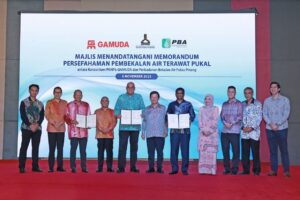by Dames Alexander Sinaga
SAWAHLUNTO, Indonesia, Aug. 27 (Xinhua) — In the front yard of Saka Ombilin Hotel in Sawahlunto, Indonesia’s West Sumatra province, 67-year-old resident Sukadi voiced hopes that tourism would breathe new life into his birthplace, as more locals continued to leave in search of better livelihoods.
The newly-opened hotel was once the main office of a Dutch company that ran the legendary Ombilin coal mine before Indonesia’s independence from Dutch rule in 1945.
Coal mining in the area, discovered in the mid-19th century, was later nationalized and managed by state-owned miner PT Bukit Asam. But in 2017, the company officially ceased operations due to depleted reserves and rising operational costs.
Two years later, the mine was inscribed on the UNESCO World Heritage list for its historical and cultural value, now recognized as the Ombilin Coal Mining Heritage of Sawahlunto. The mining workforce included local people, contract workers, and convict laborers known as the “chained people,” making the town remarkably diverse.
Sukadi’s own family history is tied to this legacy: both his paternal and maternal grandfathers were among the chained people from Java, while his parents were born in Sawahlunto and worked as forced laborers in the mine.
Coal once powered the town’s economy. Sawahlunto itself was established during the colonial era as a mining settlement. Nestled in a narrow valley along the Barisan Mountains and surrounded by hills, the town had a population of around 68,000 last year.
But since the mine’s closure, Sukadi has witnessed major changes. Many families and young people have moved away in search of opportunities elsewhere.
“Such a situation is deeply saddening. Our ancestors built this town through hardship, we never want it to be abandoned,” he said, wearing Javanese traditional attire at an annual multicultural festival near the hotel.
“So, we’re struggling to find proper ways to revive our town,” he added.
For 34-year-old resident Fransisco Firdaus, the impact was personal. He had once hoped to join the mining company after finishing vocational school. That dream vanished with the mine’s closure. Instead, he became an outsourced worker in Batam, Riau Islands province, before returning home to take a job as a contract-tourist worker at the mining museum near the hotel.
“I left my hometown for Batam to make a better living. But years later, some companies there ceased operations or downsized due to declining business,” said the father of three.
“I’m happy that UNESCO has included the coal mine on the World Heritage list. But the number of tourists here remains relatively low, since most visitors only come for heritage and cultural purposes,” he said, hoping the local government would step up efforts to promote tourism and improve the welfare of local workers.
This week, Sawahlunto hosted more than 100 heritage site managers and experts from some countries, including Malaysia, China, South Korea, Japan, Saudi Arabia, the Netherlands and Iceland. They gathered to exchange ideas on managing world heritage properties.
The second edition of the “We are Site Managers International Symposium” was inaugurated recently by Indonesia’s Culture Minister Fadli Zon.
“Each of our world heritage sites carries an outstanding universal value. We are pleased to open opportunities for collaboration with site managers, particularly those attending this gathering,” said Fadli.
He added that the ministry plans to establish a special institution to oversee the management and preservation of world cultural and historical heritage across the archipelago.
Sawahlunto Mayor Riyanda Putra pledged stronger cooperation with national and international institutions to safeguard the town’s legacy.
“Our town’s history tells a story of humanity, technological advancement, and cultural transformation. The forced laborers, known as ‘people in chains,’ left a legacy of solidarity that lives on among us today,” he said.
Both Sukadi and Fransisco hoped the government, local administration and symposium participants will help turn Ombilin into a vibrant tourism destination, creating jobs and revitalizing the economy through creative redevelopment.
“We really hope anyone and any institutions can help us bring back the town’s beauty, breathe life into its traditions, and rebuild its prosperity,” said Sukadi.






